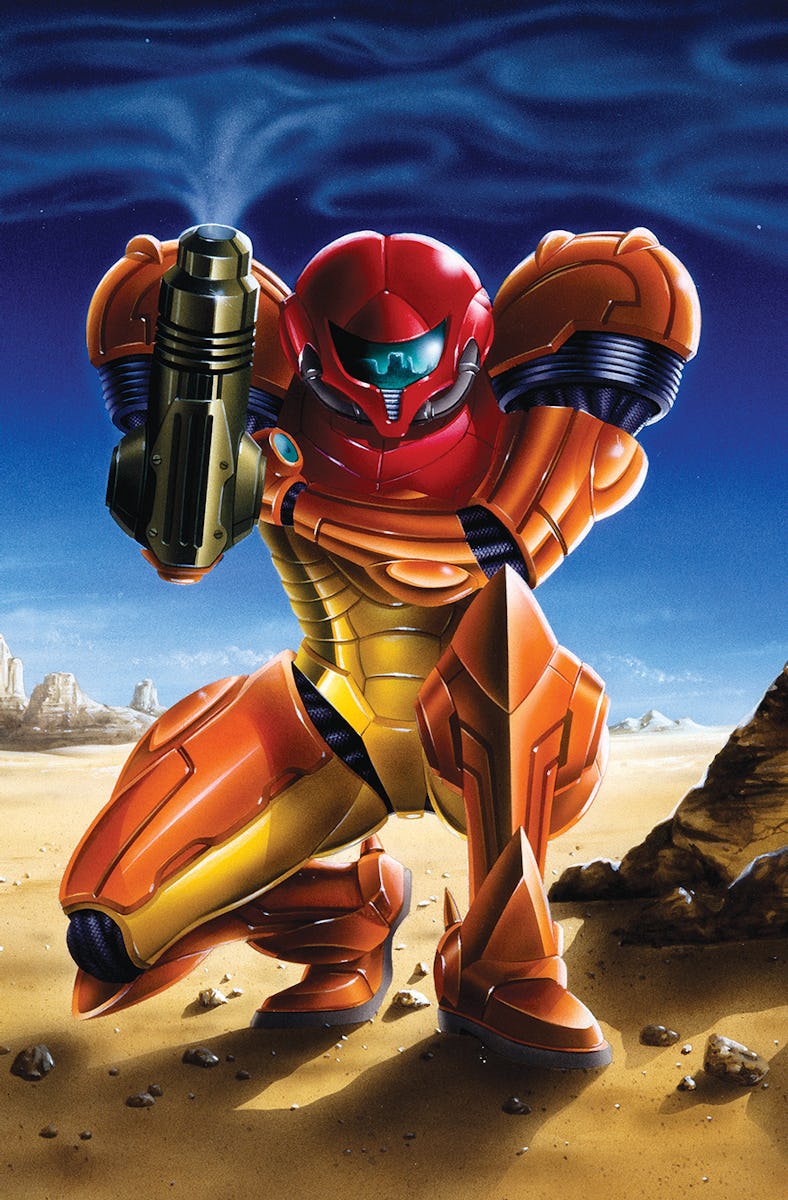Metroid II: Return of Samus Is a Masterclass in Atmospheric Game Design
And the Game Boy classic just landed on Nintendo Switch Online.

From the very start, the Game Boy was not going to blow the competition away on graphical superiority. The handheld device was up against stiff and shiny competition like Sega’s GameGear and the Atari Lynx. Press at the time of the Lynx’s release pointed out its graphical superiority, telling readers that the Atari “throws the Game Boy in the trash.”
So how did the Game Boy turn things around and become, in the words of Nintendo, “the most successful video game system ever released”? Having great battery life helps, but in typical Nintendo fashion, an excellent lineup of games like 1991’s Metroid II: Return of Samus did most of the heavy lifting. And as of early February 2023, it and many other Game Boy games are available if you’ve subscribed to Nintendo Switch Online + Expansion Pack.
Here’s a look at the assortment of Game Boy and Game Boy Advance games on Switch.
Although the original Metroid game had been a financial and critical success back in 1987, Nintendo did not step on the gas for a sequel. Between the time that Metroid and its Game Boy sequel was released in 1991, Nintendo released Super Mario Bros. 2 and 3, as well as Super Mario Land and Super Mario World. At the time, four years was a long time to wait between sequels, and it was being downsized from a standard console experience to the handheld.
As a byproduct of this migration, Metroid II does not look great.
It’s not surprising that the game has been subject to both official and fan remakes, and that Nintendo R&D had a “Metroid palette” included in the Game Boy Color. There’s clearly such a rich world that Samus explores on SR388, the home planet of the Metroids. The game’s set-up has Samus taking the fight to the eponymous Metroids, as she seeks to destroy them before the hated Space Pirates can get their hands on the mysterious giant lifesuckers. So it’s a new planet and mostly the same fight.
In Metroid II, a baby Metroid imprints on Samus, thinking she is its mother.
However, while Metroid II lacks originality, it remains a very solid game. Metroid II, like its predecessor, splits the difference between Mario side-scrolling platforming and the dungeon exploration of Zelda. The result is a game that, while it looks small and constrained, it feels vast while you’re playing and have to remember your way around. SR388 is filled with big drops and secret paths galore, both of which give such a sense of space. The planet feels like a place, a feeling that only increases with the earthquakes.
Whenever Samus takes care of a certain number of Metroids, the planet responds with earthquakes. As a result of the tremors, more of the planet’s cave system opens up, but they also make the planet feel alive. There are forces greater than Samus Aran here, and their reaction to her presence is mysterious and just a little threatening.
But that’s part of the joy of a Metroid game: You start off moving through the world with a mix of fear and curiosity and, through upgrades, learn how to conquer it. Getting Samus to go Spider mode, for example, makes the game so much easier. Tough jump ahead, or not sure how Samus is getting all the way up there? Just roll!
Say what you will about the Metroid II graphics, but its concept art is stellar.
Perhaps the main factoid that people know about Metroid II is that it's the sole game in the series to depict all evolutionary stages of the Metroid, from their jellyfish-like babies to their dino-dragon-esque Omega stage. Wandering the world of SR388 and seeing the Metroids in their various states again gives weight to the idea that they are actual animals, despite however menacing they may seem.
What might be most memorable about Metroid II happens at the end of the game, as Samus can’t bring herself to destroy the last Metroid baby. An act of kindness after so much bloodshed makes the game carry emotional weight. There’s the feeling of getting lost in Metroid II, as well as the feeling of getting stronger amidst an intricate maze of a planet. Then there’s the feeling of leaving with more than you expected, which is why the game transcends its poor graphics to become one of the series’ most memorable entries.